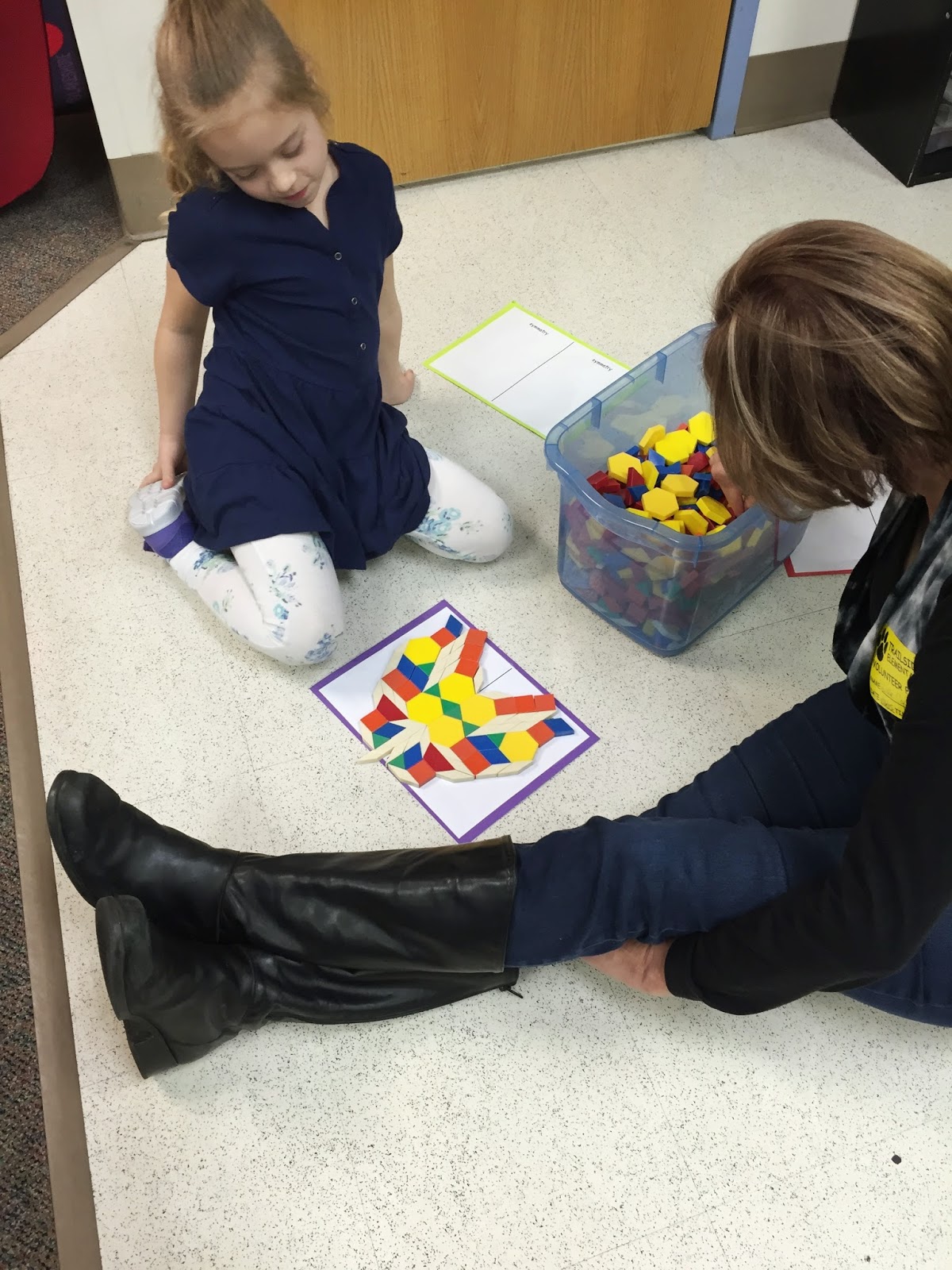L is for Learning. . .
This means I get to meet with anywhere from 6-10 students at a time to deliver my core instruction. The groups change from concept to concept, unit to unit. The pro: I get to teach and assess my student's math skills much more closely than in a whole setting. The con: I only have 12 minutes to do so and I'd love to have more time (especially for the guided practice part of it) but it has to be this way due to all my other groups being independent and also needing my instruction.
The proof is in the pudding: My lowest student, in a small group setting, is able to show me much better and more often that she is grasping the skills and concepts I'm teaching! This was not the case earlier this year because she got lost in the group when it was the entire class.
Something else I really like about teaching math in a small group is that I choose to use the last 30 seconds of my group to show and explain the independent practice that they will do immediately following my group. I show them my Math Workbook, which I always do one part of the assignment so they can see exactly what the written directions mean.
The proof is in the pudding: One of my behavior challenges has his best behavior and attitude when he comes to see me in small group and I truly think it's because he's getting more of me to himself.
How, you ask, do I manage the behavior and noise of the majority of my class while actively teaching the minority of my class? This was my first "Uh oh!" and subsequent wake up call. This group of kids I have this year is tough and exhausting but they are really motivated by rewards so we play a game every day during the first 3 (of 5) rotations. It's me versus the students...don't have a catchy name yet. I have 2 buzzers right next to me as I teach (I sit on the carpet in front of my SmartBoard to teach but don't use the SmartBoard). If it's too loud, I hit the red buzzer and earn a point. One of the kids in the group that I'm teaching gets to keep track of the points (tallies) on a little whiteboard next to us. If it's really calm and quiet then I hit the blue buzzer and students earn a point. Whomever wins at the end of the third round gets a little piece of candy to suck on. . .because, my theory was, if they are sucking on candy they are not talking or making noise.

How, you ask, do I manage to continue teaching when students who are not in my group come up to ask me a question or get help?
 |
| This is a magnetic tap light that I wrote on....Pinterest idea! |
 |
| I found this necklace at a dollar store in Montana but you could easily make one. |
We do have to talk about how to be a problem solver when you really need help or have a question for Mrs. Locke but she's busy teaching. Finding your own solution and asking a peer are the two most effective and efficient.
This quote sums up my feelings about teaching math in a small group:





































